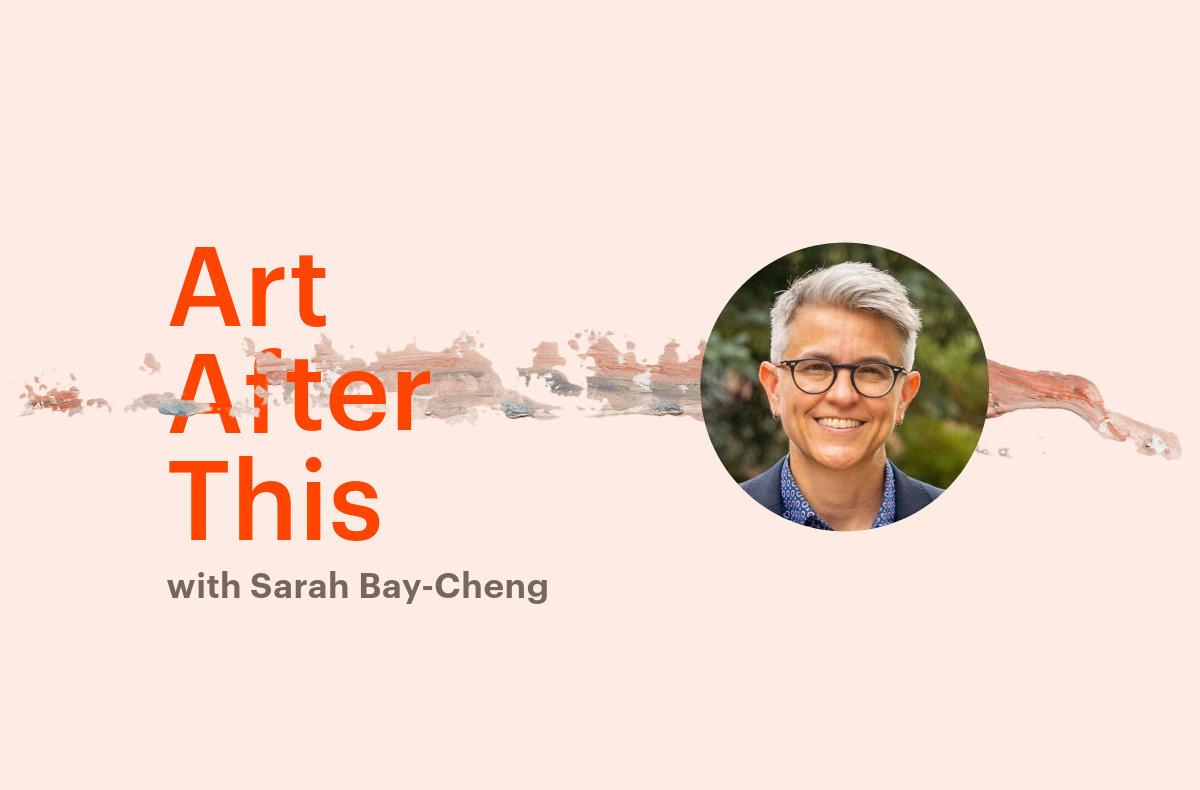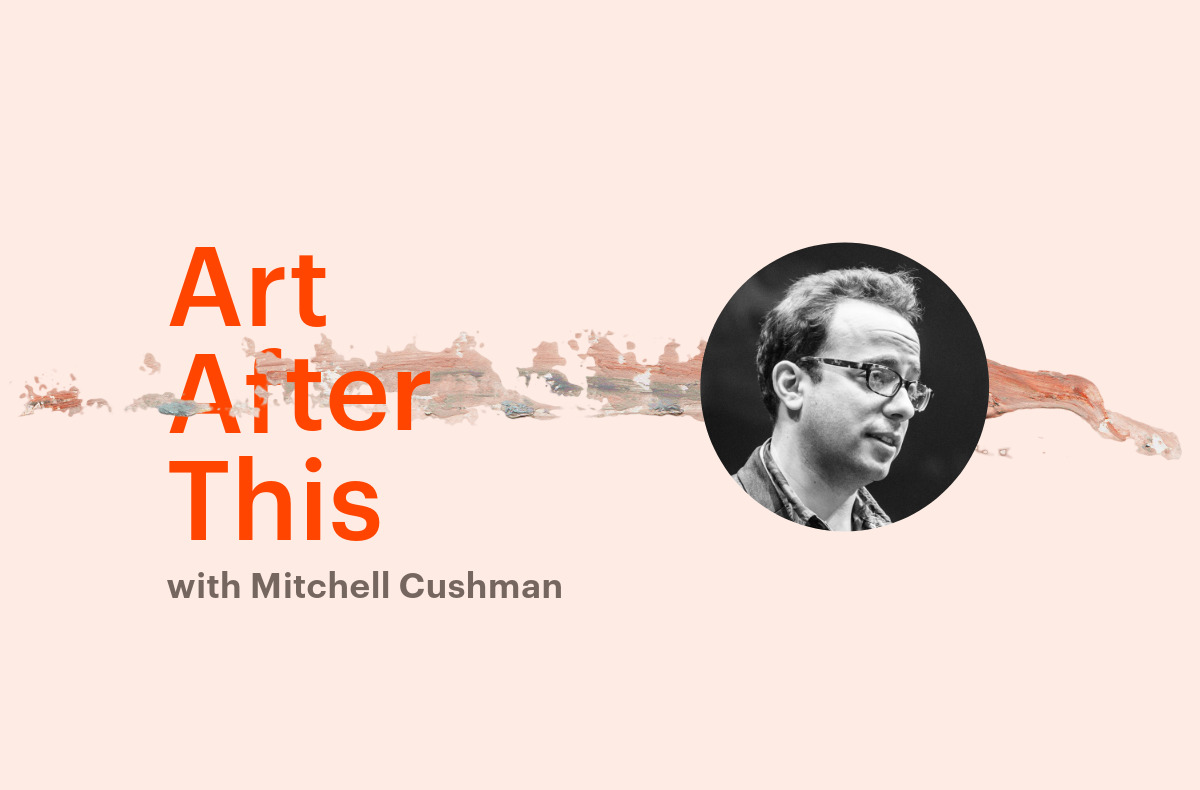By David Maggs, Metcalf Fellow on Arts and Society
We started this series on digital futures and the performing arts with an essay from me on the opportunities and anxieties about this relationship. We then got a little more optimistic in discussion with immersive theatre artist Mitchell Cushman. Today, we hear from Sarah Bay-Cheng, Dean & Professor in the School of the Arts, Media, Performance & Design at York University. As someone who brings a playful delight to thinking deeply about the world, Bay-Cheng is both a joy to talk to and a challenge to keep up with. I began by wondering how she ended up at this intersection between art and emerging technologies.
“I grew up in a theatre family. My dad is a professional puppeteer, my parents met at theatre school, my grandmother loved taking us to the opera. I’ve always been interested in things that are new and weird. Growing up as a queer person — before I had the language for that — I always lived outside the norm of my gender, class, and social standing. I think for a lot of us in the arts professionally, we sometimes forget how personally our artistic interests begin. In the arts, I was looking for an image of myself, ideas of myself and who I could become, what I was attracted to, what’s fun or pleasurable, or meets some other need.”
“That explains the art,” I agree, “but emerging technologies?”
“Well remember,” Bay-Cheng reminds me, “the late 70s, early 80s, where I grew up in California? At that time, hacker culture, computer culture, even the early days of Apple, technology was part of the counterculture! As I remember it, techno-culture was about finding spaces to be weird and interesting and I thought, wow, my great passions are uniting — we can play video games on stage!”
“That’s refreshing,” I admit, “given how opposed these worlds seem now.” Bay-Cheng gives me a questioning look. “I mean that the arts feel so threatened by digital culture,” I explain, “there’s reluctance at this intersection between art and digital media.”
“Perhaps in certain places, but these are broad fields,” she considers, “people making art in certain contexts might be nervous of computers even while they spend time on TikTok. In a lot of places these domains are growing inseparable. In his influential book, Liveness, Philip Auslander illustrates this by referring to jumbotrons at stadium rock concerts. People might pay thousands of dollars to see Taylor Swift in concert, but the majority of them will mostly watch giant video screens.”
“So half the time we’re dreading the presence of technology,” I think out loud, “and the other half we’re barely noticing how deeply embedded it’s already become?”
“And barely notice with good reason,” she nods, “given how effortlessly it comes to us now. I grew up in the last vestiges of a media-saturated analog culture.”
This I have to repeat, “media-saturated analog culture?”
“Film, television, music, video games, it was everywhere,” she explains, “but you had to do something to get it. You had to move your body to particular places, there was labour involved, you had to make choices and act on them. If you wanted a video, you went to the video store, you walked down aisles of video tapes to pick out the one you wanted and then brought it back home and shoved it into that big VCR on top of your television. If you wanted new music, you went to the record store and flipped through their collection, you listened to samples on headphones, you looked at record cover art, you chose the object you wanted and went home. Before widespread use of the internet, people worked to access cultural objects.”
“So, the behavioural instincts then were so different?” I confirm.
“I think so,” she nods, “and we counted on that in many different ways. It wasn’t just about going out and choosing albums or VHS tapes, it was more than that. Not long ago, people might wander through a city and happen upon some event and say, ‘hey, what’s going on over there?’” Bay-Cheng shakes her head, “That’s not as much of an option anymore. Artists rarely attract audiences that way. It’s similar to online dating; it’s hard to meet people offline if most people in your dating pool are meeting online.”
“Which creates discoverability challenges?” I ask, trying to tease out the implications for what we’re doing as a cultural sector.
“More than that,” she points out, “it puts a different pressure on us to think about audience in more specific ways. They aren’t as accidental anymore. So, understanding who they are, where they are, and what they are responding to is now crucial to not only finding them or presenting work in ways that they will find it, but also creating something uniquely for your audience. Asking ourselves much more specifically if what we are offering is something they need.”
“Because they aren’t wandering around,” I clarify.
Bay-Cheng makes a cautioning face. “It’s not just circumstantial,” she says, considering something more vague and concerning, “it isn’t just that audiences aren’t out wandering our sidewalks looking for something to do. It’s that our world, and our experience of our different domains are increasingly siloed. Our understanding and exposure to things in the world have become algorithmic, made by, tailored to the data we are all producing, passively, actively, throughout the day.”
Responding to the consideration, I nod. “So, we can be standing on the same sidewalk, while our worlds drift further and further apart?”
“It’s a real problem,” she shrugs. “How do we cater to these narrowing preferences, narrowing experiences, narrowing worlds? It’s a challenge for anyone trying to create collective cultural experiences or educational experiences for that matter.”
“Doesn’t it make you want to pound the tables?” I exclaim, “Shut off the screens and get back to building good common worlds?”
Bay-Cheng smiles compassionately. “But how often do any of us resist?” she asks. “We love to hate on social media, but as soon as we’re waiting for an elevator, who doesn’t pull out their phone? We don’t want to be tracked by big data surveillance, but who goes out and buys a giant, unfolding paper map and finds someone to come along with them as navigator to say when to turn right or left?”
“We’re just trapped?” I ask, hoping not to end on a helpless note.
Bay-Cheng looks away, either recalling a distant memory, or imagining a future far from here. “There are ways in which that’s always been the case. Different times, different societies, different traps. But if I take comfort in something, it’s that great art, great theatre has always figured out how to negotiate those constraints. Negotiate and meet our audiences where they are, in the worlds they’re living in, and bring them somewhere new and interesting — a place we want them to experience, a place they might like if they give it half a chance. That’s always been the work. It’s always been a bit of a dance, and a central challenge to creativity has always been about getting good at that dance. Maybe now the audience knows how to move a little differently? Maybe now they’re leading that dance in different ways? We need to learn how to respond if we want to keep dancing. But I don’t think that takes us too far from what we’ve always had to do.”




